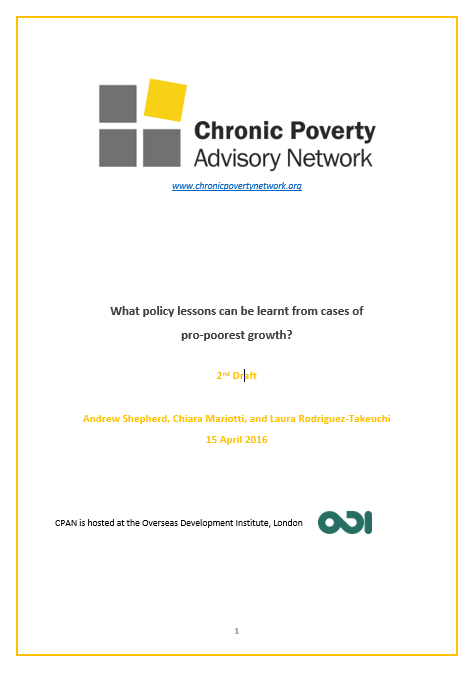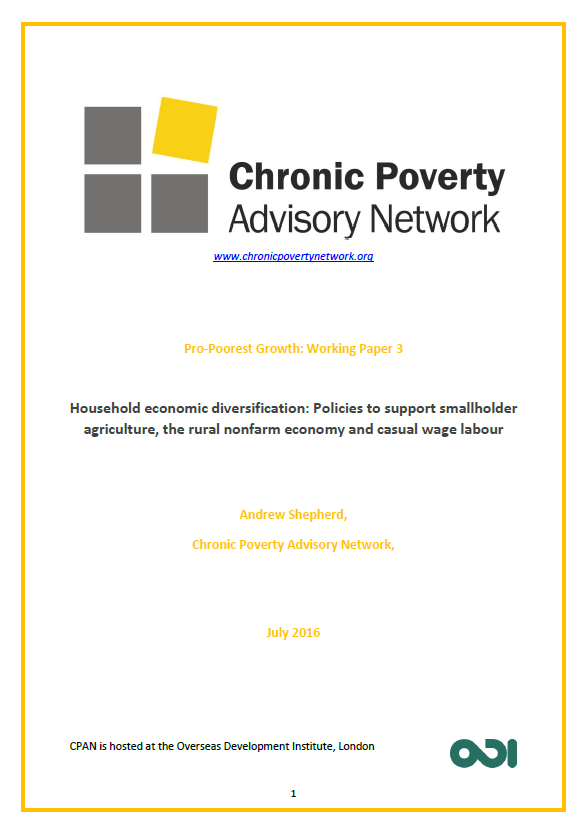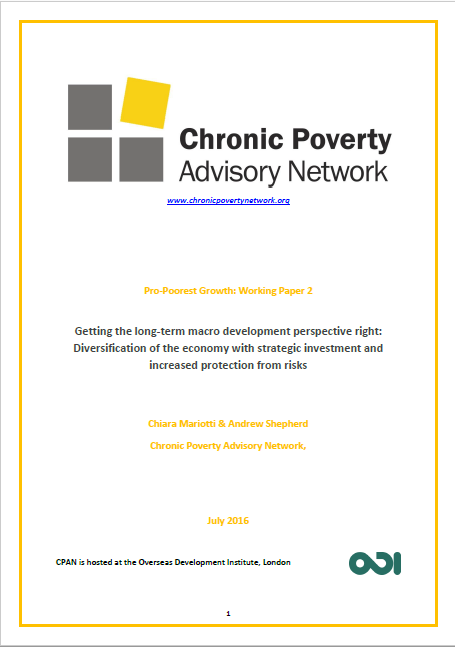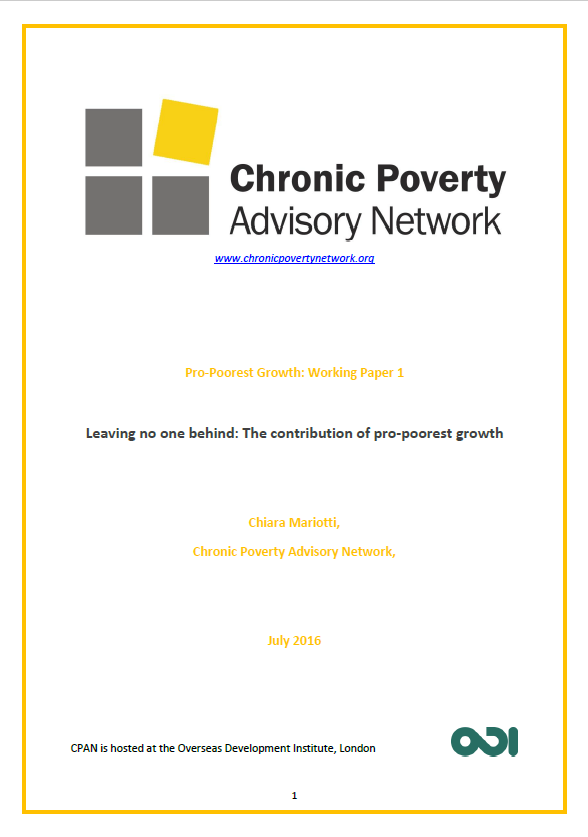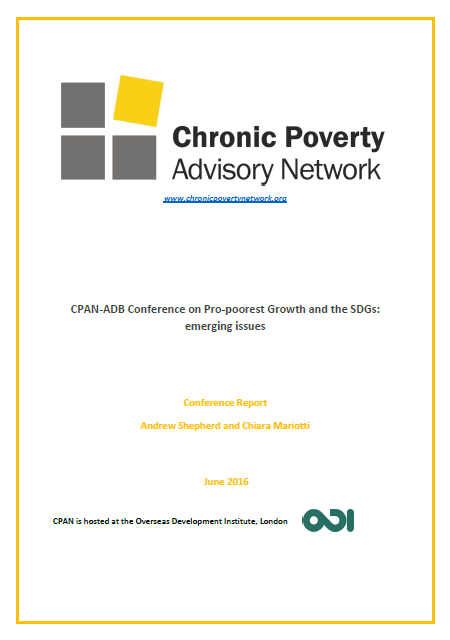The recommendation that pro-poorest economic growth is necessary to improve all poverty dynamics and to eradicate extreme poverty was a key finding of the 2014–15 Chronic Poverty Report: The road to zero extreme poverty and more generally the outcome of the Chronic Poverty Advisory Network (CPAN)’s work on policies for poverty eradication. This finding compelled CPAN to embark the research programme Leaving no one behind: adjusting economic growth strategies - Pro-poorest growth policy analysis investigating the policies that can drive and support pro-poorest growth.
This Working Paper is the first of three outputs of this programme. It outlines what pro-poorest growth is and why it is necessary, building on the concept of pro-poor growth popularised in the 2000s. The key messages are:
The 2000s have been characterised by widespread economic growth and poverty reduction, but in many contexts the poorest people have not benefited from growth as much as the rest of the population, or their well-being has increased only marginally
Achieving the Sustainable Development Goal of eradicating extreme poverty by 2030 is likely to require pro-poorest growth
Some countries have seen pro-poor growth, and some knowledge exists on the factors that are conducive to it, yet in many parts of the world many poor people are still being left behind. This compels an investigation of what policy interventions are required to achieve pro-poorest growth, whether these differ from previous policy prescriptions and whether they differ for countries at different stages of transformation and engaged in different patterns of economic growth
Download the working paper (through Orangedox)
Related resources:

